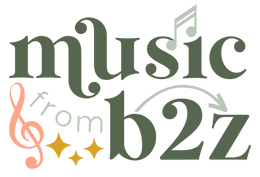
Here’s the thing about teaching instrument families: a lot of times it ends up being super surface-level. We show a picture of the instrument, play a quick video clip, kids repeat the family name back to us, and… that’s the whole lesson.
The problem? That kind of quick overview doesn’t stick. A week later, students are back to calling everything a trumpet or forgetting how a sound is even made.
The truth is, kids need more than just recognition. They need to connect with each instrument. They need time to think about how it works, what makes it unique, and why it belongs in a certain family.
The challenge? As teachers, we don’t always have the luxury of time — or the materials — to go deep with every single instrument. That’s where foldables come in.
✂️ Why Foldables Work So Well
Foldables turn what could’ve been a one-and-done worksheet into a mini project. Instead of filling in a blank and moving on, students are cutting, folding, writing, and interacting with the material. That little bit of ownership makes a huge difference.
Here’s what makes these instrument family foldables so helpful:
-
They slow students down enough to process the information.
-
They encourage students to connect how an instrument works with what family it belongs to.
-
They create a student-made reference tool — something they can go back to later when you review or assess.
For example, instead of just saying “That’s a clarinet,” students walk away knowing:
“That’s a clarinet. It’s made of wood (or plastic), it makes sound when the reed vibrates, and it’s part of the woodwind family.”
That’s a deeper level of understanding — and it sticks way better. 🎉

💡 How to Use Them Without Adding Extra Work
Foldables are flexible enough to fit wherever they make sense in your lessons, which means you don’t have to overhaul your unit to use them. A few options:
-
After a family lesson → Once you’ve introduced a family, students complete the foldables for the instruments you just covered.
-
In centers or small groups → Kids can work together to complete different instruments, then compare and share what they learned.
-
Early finishers → Instead of busy work, they get something meaningful that reinforces the concepts.
-
Sub plans → These are self-explanatory but still content-rich, so you can feel good about leaving them (and the answer keys are included).
-
Class presentations → Take it one step further and have students present their completed foldable to the class. It gives them ownership, reinforces vocabulary, and helps their classmates learn, too.
Once students know the routine with the first one, they’re quick and independent with the rest — which makes it easy for you and valuable for them.
🧩 The Big Picture
Teaching instrument families doesn’t have to stay at the surface level. Giving kids time to explore individual instruments helps cement the learning and supports long-term recall. Foldables are a simple way to build that deeper connection without adding a big project to your already full plate.
They’re hands-on, interactive, and flexible enough to use in whatever way makes sense for your classroom.
🎻 Ready to Try Them?
The Instrument Family Foldable Bundle includes foldables for 24 different instruments across woodwinds, brass, strings, and percussion — giving your students an engaging way to dig deeper into every family of the orchestra.
For each instrument, students will:
-
Label the parts of the instrument
-
Describe what it’s made of and how it makes sound
-
Label and color the instruments in the corresponding family
-
Put the family instruments in pitch order
-
Label where the family sits in the orchestra
-
Write down any questions or wonderings they still have about this instrument
It’s hands-on, interactive, and a simple way to move beyond surface-level recognition into deeper understanding.
Grab the bundle now and make instrument families something your students don’t just memorize for a week… but actually understand.


